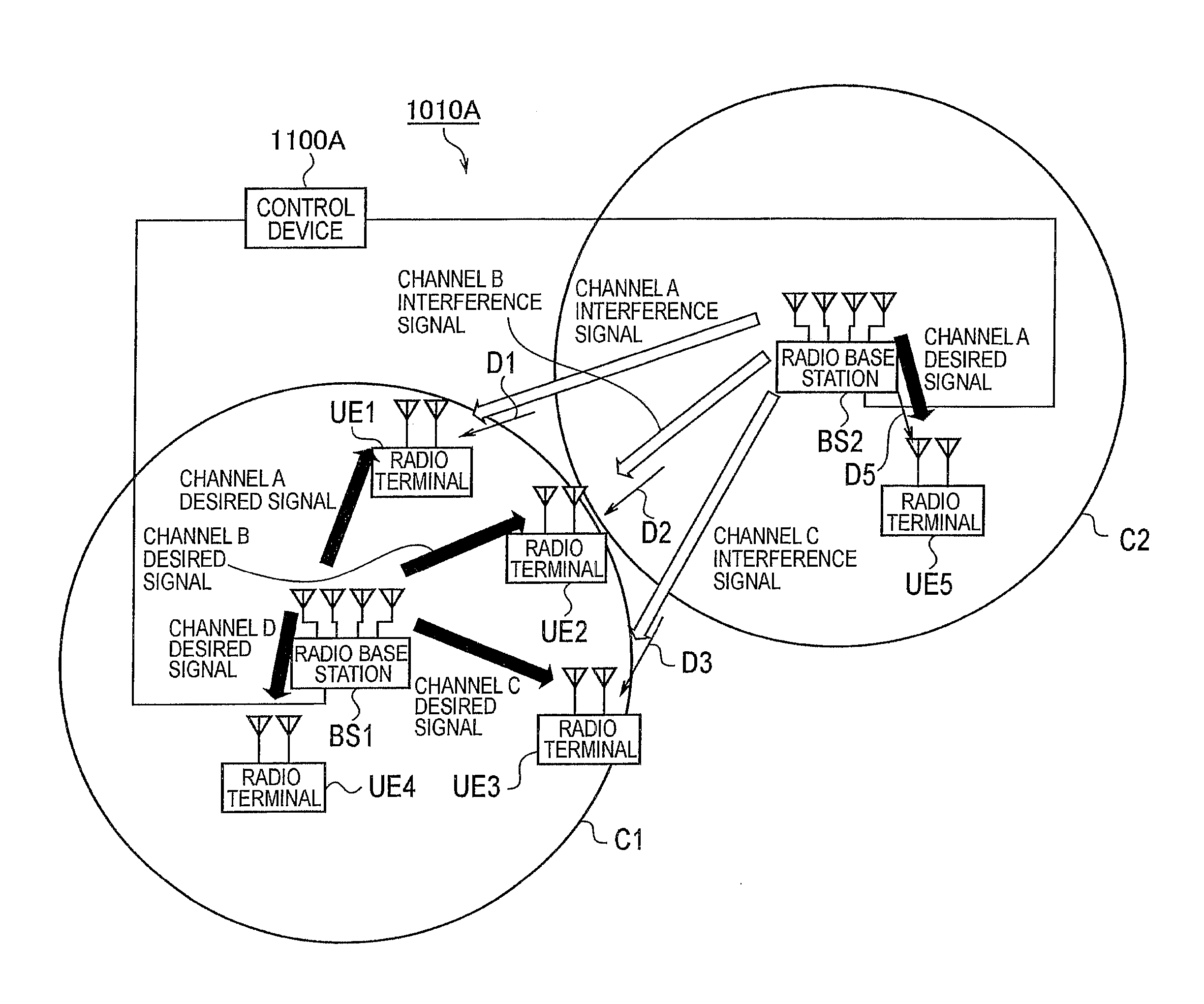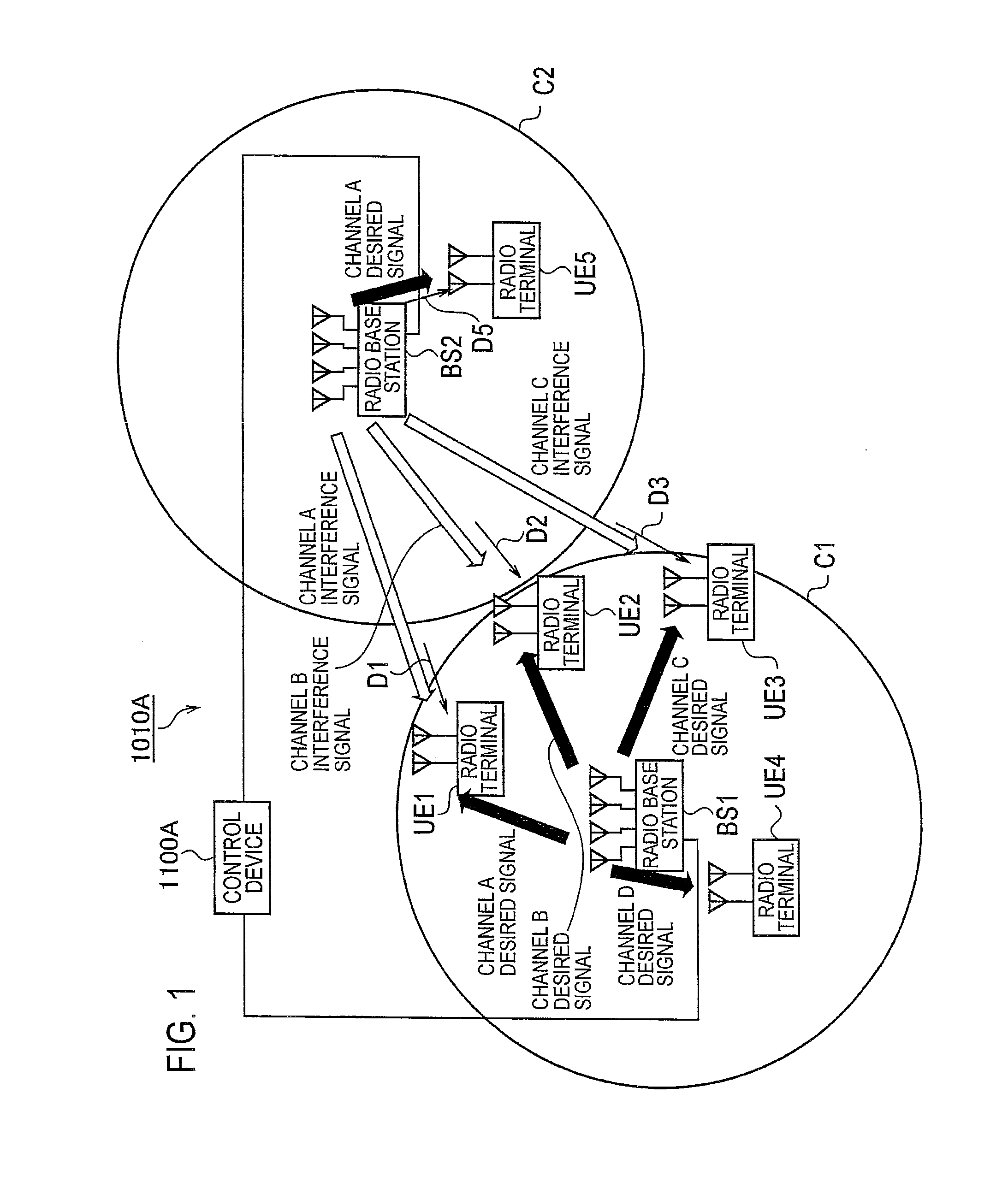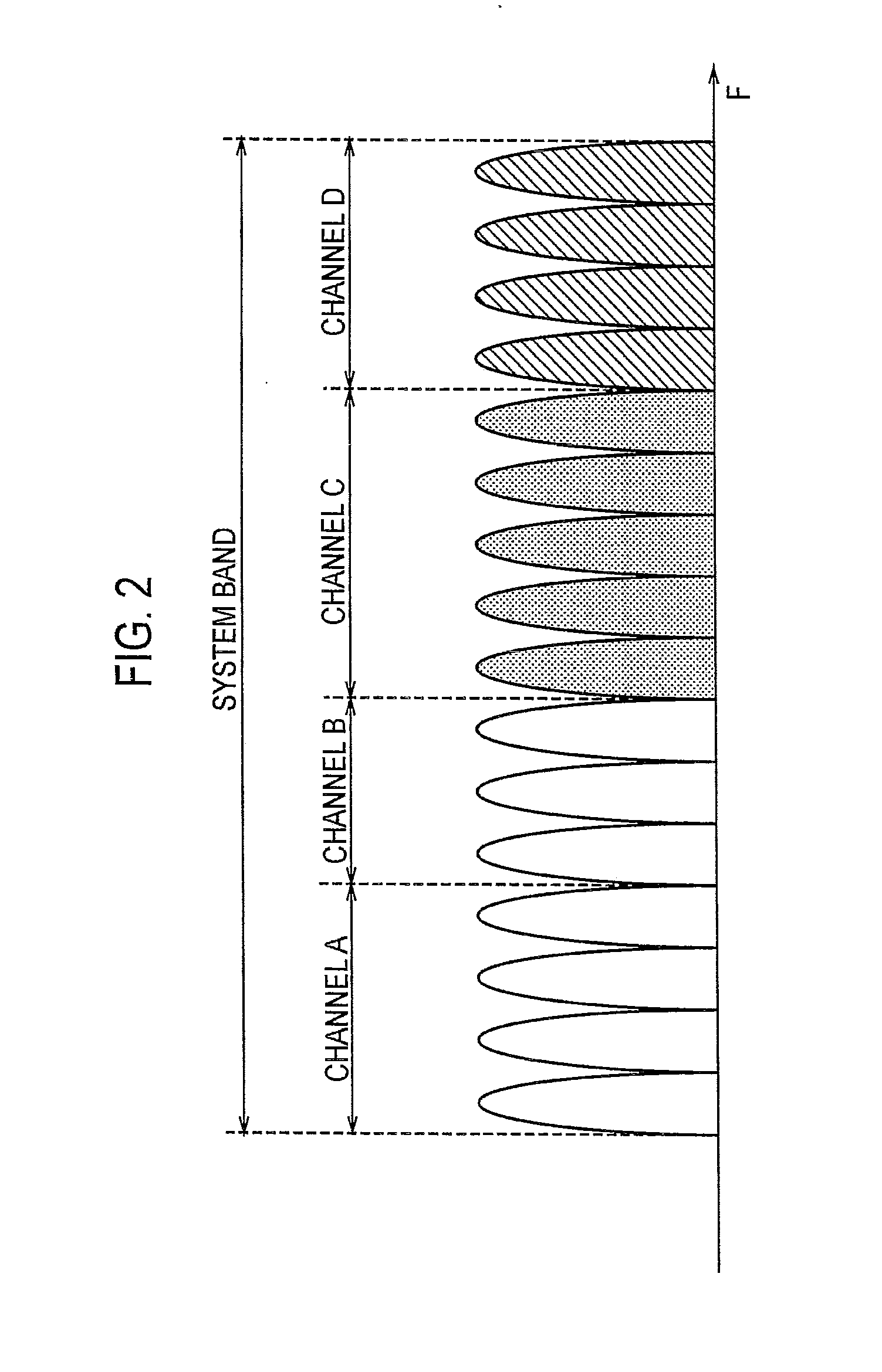Radio base station, radio terminal, and radio communication method
a radio terminal and radio communication technology, applied in the field of radio terminals, radio base stations, radio communication methods, can solve the problems of insufficient improvement of communication quality, achieve the effect of preventing the occurrence of interference signals, improving cell throughput, and improving communication quality in the radio terminal ue1
- Summary
- Abstract
- Description
- Claims
- Application Information
AI Technical Summary
Benefits of technology
Problems solved by technology
Method used
Image
Examples
first embodiment
[0058]In the first embodiment, a description will be given of (1) Summary of Radio Communication System 1010A, (2) Detailed Configuration of Radio Communication System 1010A, (3) Transmission Directivity Control in Radio Base Station BS2, (4) Operation of Radio Communication System, and (5) Effects.
(1) Summary of Radio Communication System 1010A
[0059]A description will be given of a summary of a radio communication system 1010A in the order of (1.1) Schematic Configuration of Radio Communication System 1010A and (1.2) Schematic Operation of Radio Communication System 1010A.
(1.1) Schematic Configuration of Radio Communication System 10A
[0060]FIG. 1 is an overall configuration diagram of the radio communication system 1010A according to the first embodiment.
[0061]As shown in FIG. 1, the radio communication system 1010A includes a radio terminal UE1, a radio terminal UE2, a radio terminal UE3, a radio terminal UE4, a radio terminal UE5, a radio base station BS1 (first radio base statio...
modification example 1 of first embodiment
[0147]In the aforementioned first embodiment, the interference source identification unit 1121 of the control device 1100A identifies the radio base station BS2 of the interference source from among multiple radio base stations on the basis of the radio base station identification information, but it is also possible to identify the interference source by use of the following method.
[0148]In this modification example, the storage unit 1130 of the control device 1100A previously holds therein correspondence information associating interference information with each of the radio base stations. The interference source identification unit 1121 of the control device 1100A identifies the radio base station BS2 of the interference source from among multiple radio base stations on the basis of the interference information received by the receiver 1111 and the correspondence information held in the storage unit 1130.
[0149]According to the aforementioned method, the base station identificatio...
modification example 2 of first embodiment
[0150]In the aforementioned first embodiment, the information indicating the coefficient or angle indicating the arrival direction, or the PMI is used as the interference information and the control information.
[0151]However, location information indicating the location of each of the radio terminals UE1, UE2 and UE3 may be used as the interference information and the control information. In this case, an existing location detection technique such as location detection using a GPS can be used. In a case where the location information is used as the interference information and the control information, the transmission directivity controller 422 of the radio base station BS2 may identify the respective directions of the radio terminals UE1, UE2 and UE3 from the respective locations of the radio terminals UE1, UE2 and UE3.
PUM
 Login to View More
Login to View More Abstract
Description
Claims
Application Information
 Login to View More
Login to View More - R&D
- Intellectual Property
- Life Sciences
- Materials
- Tech Scout
- Unparalleled Data Quality
- Higher Quality Content
- 60% Fewer Hallucinations
Browse by: Latest US Patents, China's latest patents, Technical Efficacy Thesaurus, Application Domain, Technology Topic, Popular Technical Reports.
© 2025 PatSnap. All rights reserved.Legal|Privacy policy|Modern Slavery Act Transparency Statement|Sitemap|About US| Contact US: help@patsnap.com



